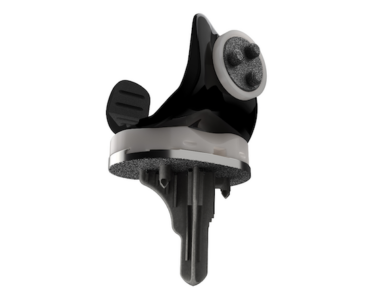Global medical technology company, Smith+Nephew, has announced the launch of its Real Intelligence suite of enabling technology solutions including its next generation robotics platform, the CORI Surgical System, in Australia and New Zealand.
Demand for robotic-assisted surgery for large joints in Asia-Pacific is forecast to grow (27.3% between 2017 to 2027).1 In Australia alone, leading technologies, including robotics, are already utilized in nearly 50% of all total knee procedures2 – a market with approximately 57,000 total knee arthroplasty and 3,700 unicompartmental procedures per year.2
The CORI Surgical System is small, portable, and designed for today’s crowded operating rooms.3 It includes new camera technology that is over four times faster*3, offers more efficient cutting with twice the volume*3, and aims to deliver a faster cutting time**3. The CORI System uses surgeon-controlled robotics, and its modular design will enable it to be scaled across the orthopaedic service line.
This week, the first CORI System total knee replacement procedure was performed in Australia at sportsmed, Adelaide. “We are excited to introduce another opportunity to access the next generation of advanced robotics within the industry”, says Alan Morrison, CEO, sportsmed. “The CORI Surgical System’s efficient handheld form factor is ideal for orthopaedic surgery, as undertaken at sportsmed. Complemented by patient engagement tools and outcome measures, CORI is another step towards a long-term strategy to advance orthopaedics using technology”.
The benefits of robotics-assisted surgery for patients are myriad, and include significantly improved patient reported outcome measures (PROMs)4†‡ and shortened length of hospital stay5‡, where a study has shown an earlier return to an active lifestyle4‡π.
“We have been building towards this moment since the first NAVIO◊ robotics-assisted procedure was performed in Australia back in 2015,” said Vassie Ponsamy, Managing Director of ANZ, Smith+Nephew. “We are more than ready to help accelerate the adoption of this exciting technology with our customers so their patients can realize the many benefits of the personalised knee replacement experience.”
The CORI Surgical System was first launched in the US during 2020 and has expanded in other global markets for both total and unicompartmental knee arthroplasty applications. For more information about Real Intelligence and the CORI Surgical System, please visit www.real-intelligence.com.
References
- DRG Orthopedic Surgical Robotic Devices Market Analysis 2019.
- Australian Joint Registry 2020 report.
- Smith+Nephew 2020. CORI◊ and NAVIO◊ Technical Specification Comparison. Internal Report. ER0488 REV B.
- Canetti R, Batailler C, Bankhead C, Neyret P, Servien E, Lustig S. Faster return to sport after robotic-assisted lateral unicompartmental knee arthroplasty: a comparative study. Arch Orthop Trauma Surg. 2018; 138(12):1765-1771.
- Sephton BM, Bakhshayesh P, Edwards TC, Ali A, Kumar Singh V, Nathwani D. Predictors of extended length of stay after unicompartmental knee arthroplasty. J Clin Orthop Trauma. 2020;11(2)S239-45.
*compared to NAVIO◊ Surgical System
**With the CORI bur; compared to NAVIO Handheld Robotics, as demonstrated in total knee cadaver studies
† n = 28, p<0.05, (Objective International Knee Society Score)
‡ for unicompartmental knee arthroplasty vs other techniques
πn= 28 (n=11 robotic procedures), p<0.01)
Source: Smith+Nephew











